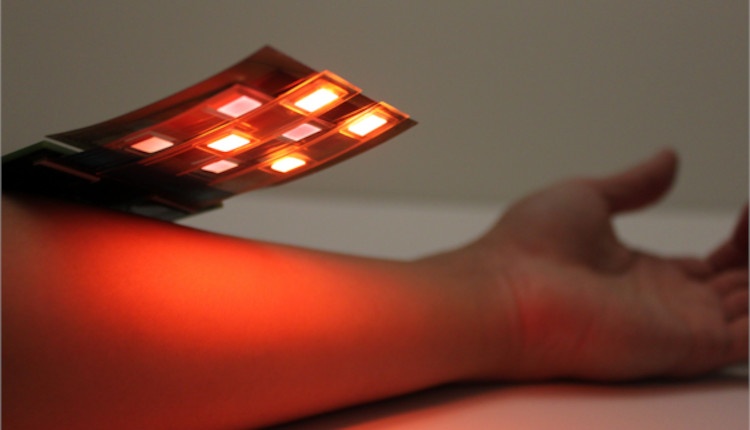
Healing wounds and perfusion oximeter, new skin-like sensor can map blood-oxygen levels
Skin sensitive oximeter: a new flexible sensor developed by engineers at the University of California, Berkeley. It can map blood-oxygen levels over large areas of skin, tissue and organs. Eventually, it can give doctors a new way to monitor healing wounds in real-time.
The oximeter is always connected to a rigid and bulky finger clip sensor. A new device has been studied by the University of California. It is a brand-new tool able to map blood-oxygen levels monitoring healing wounds in real-time. Yasser Khan, a graduate student in electrical engineering and computer sciences at UC Berkeley, reports that the researchers’ team wanted to break away from that, and show oximeters can be lightweight, thin and flexible.
Healing wounds with new skin sensitive oximeter
The sensor, as the official publication describes (link at the end of the article) is made of organic electronics printed on bendable plastic that moulds to the contours of the body. Unlike fingertip oximeters, this oximeter can detect blood-oxygen levels at nine points in a grid and can be placed anywhere on the skin. It could potentially be used to map oxygenation of skin grafts, or to look through the skin to monitor oxygen levels in transplanted organs, the researchers say.
Ana Claudia Arias, a professor of electrical engineering and computer sciences at UC Berkeley reports: “All medical applications that use oxygen monitoring could benefit from a wearable sensor. Patients with diabetes, respiration diseases and even sleep apnea could use a sensor that could be worn anywhere to monitor blood-oxygen levels 24/7.
What is new with this new oximeter? How can it make the difference in healing wounds?
A common oximeter use light-emitting diodes (LEDs) to shine red and near-infrared light through the skin and then detect how much light makes it to the other side. Red, oxygen-rich blood absorbs more infrared light, while darker, oxygen-poor blood absorbs more red light. The sensors can determine how much oxygen is in the blood thanks to the ratio of transmitted light.
The best work of these oximeters is done on areas of the body that are partially transparent, like the fingertips or the earlobes. They can only measure blood-oxygen levels in a single point of the body at a time.
Since 2014, when the team of graduate students showed that printed organic LEDs can be used to create thin, flexible oximeters for fingertips or earlobes, the work became even harder, developing a way of measuring oxygenation in tissue using reflected light rather than transmitted light.
The combination of these technologies let them developing a new sensor which can detect blood-oxygen levels anywhere on the body. The new sensor is built of an array of alternating red and near-infrared organic LEDs and organic photodiodes printed on a flexible material.
They tested the blood-oxygen levels on the forehead of a volunteer breathing progressively lower concentrations of oxygen like he was climbing and going up in altitude. They found that it matched those by using a standard fingertip oximeter.
Yasser Khan continues: “After transplantation, surgeons want to measure that all parts of an organ are getting oxygen. If you have one sensor, you have to move it around to measure oxygenation at different locations. With an array, you can know right away if there is a point that is not healing properly.” This is a great way to keep monitoring wounds and their healing, eventually.
READ ALSO
Tourniquet: Stop bleeding after a gunshot wound
Wound care guideline (part 1) – Dressing overview
3 most common mistakes on wound treatment that cause more HARM than good



